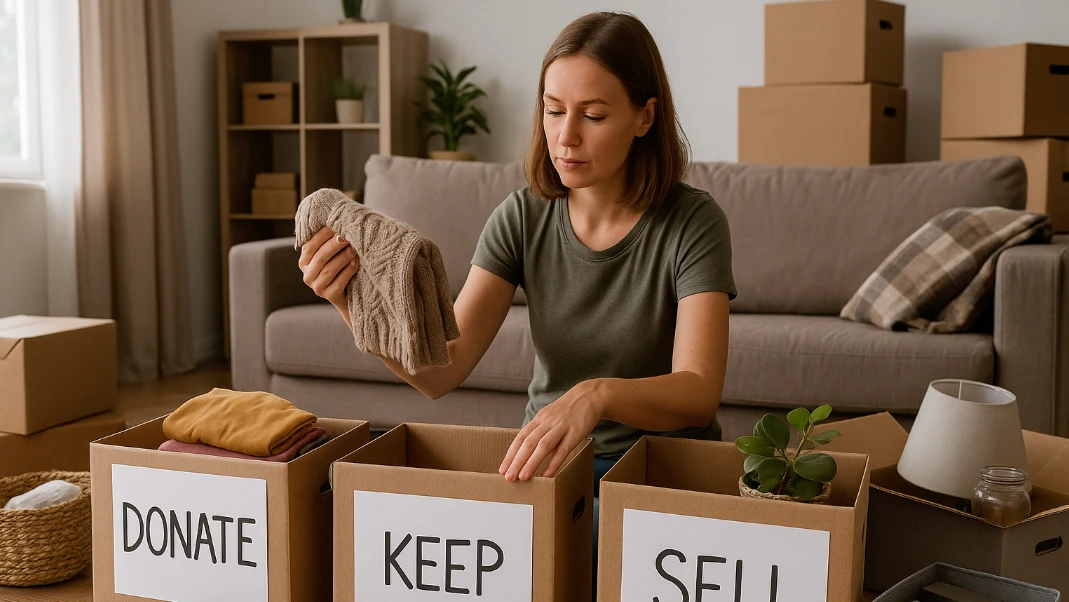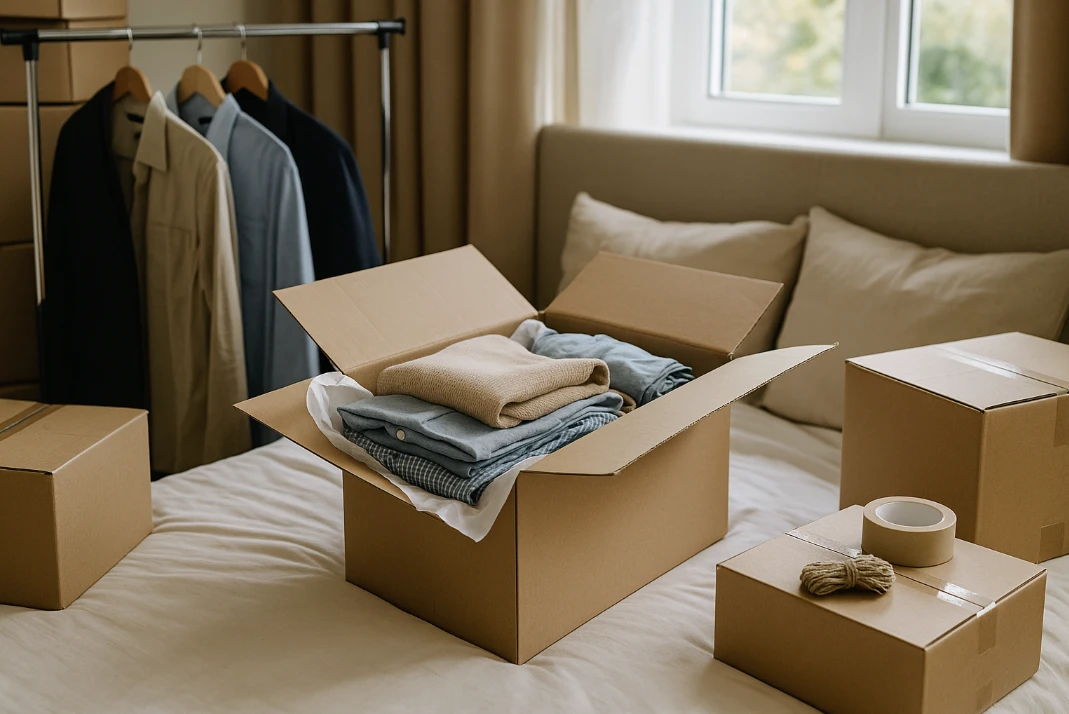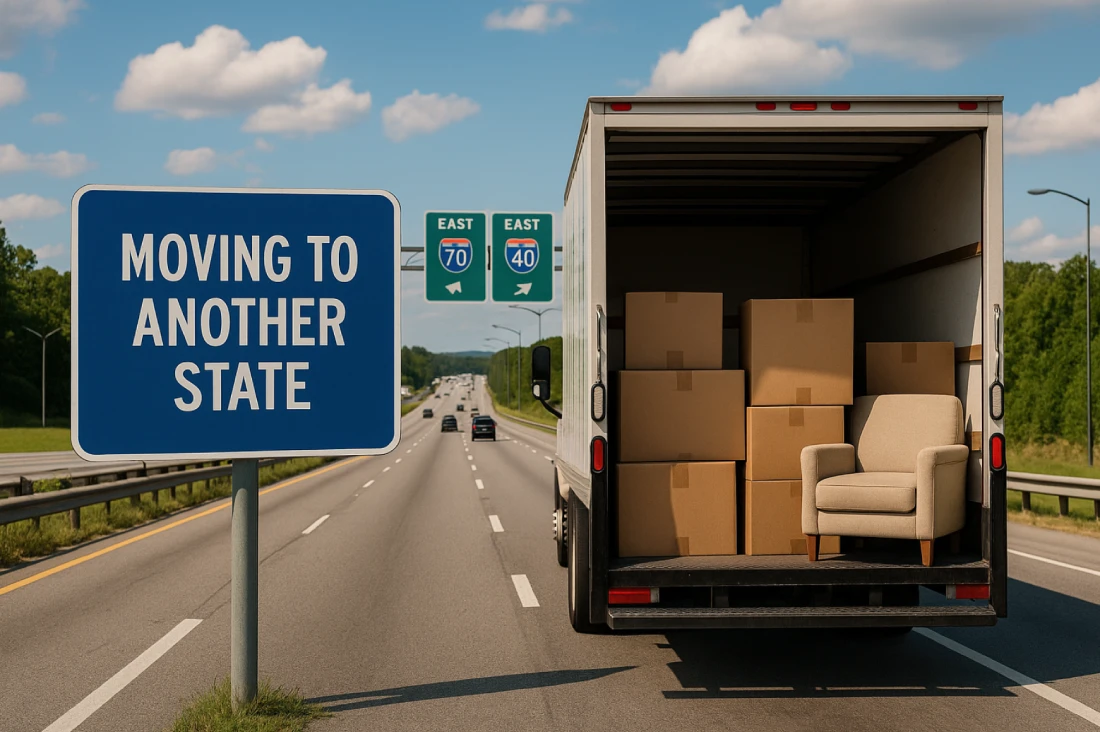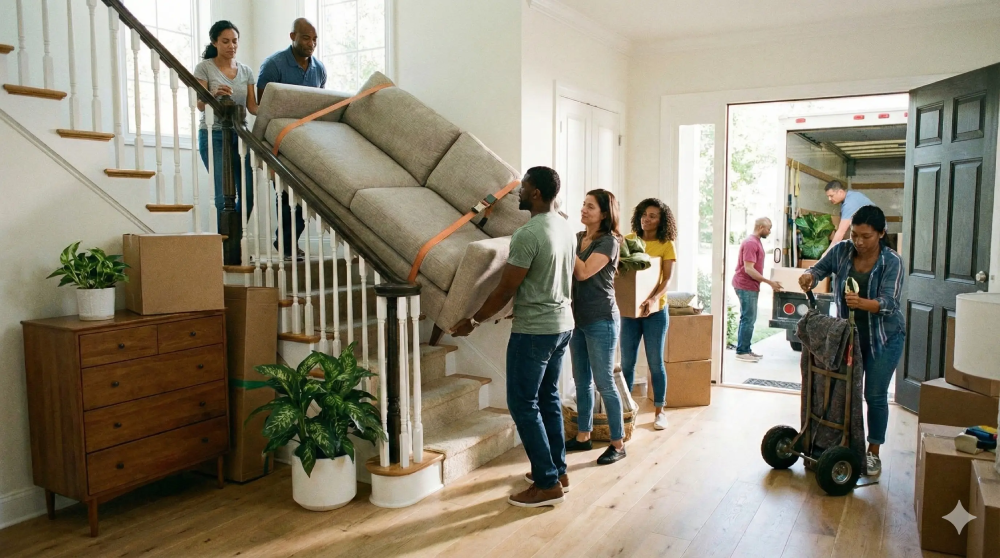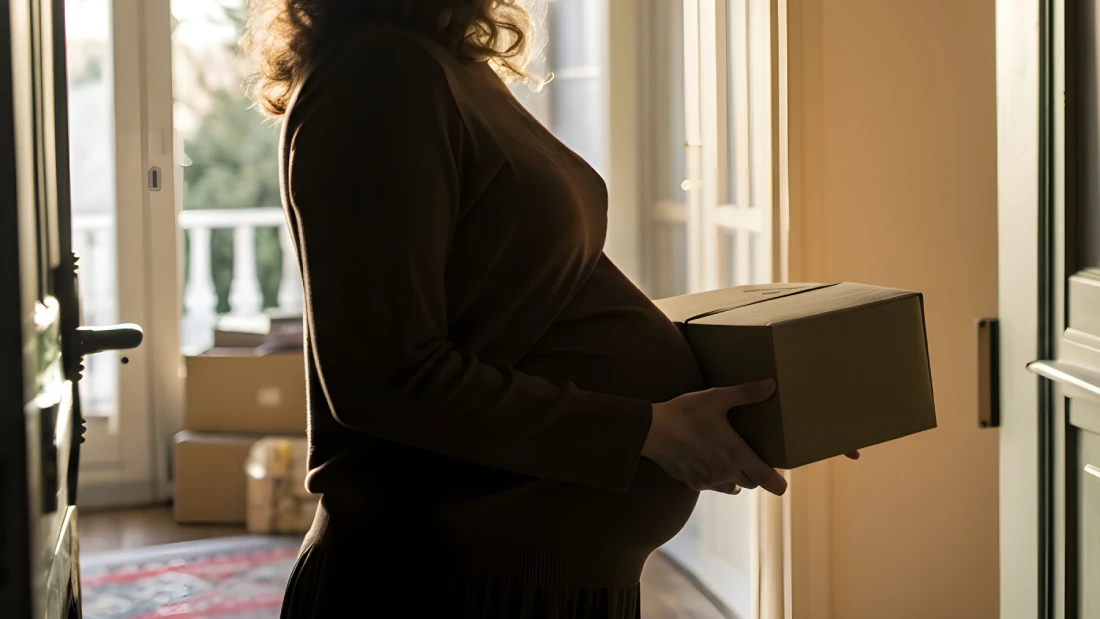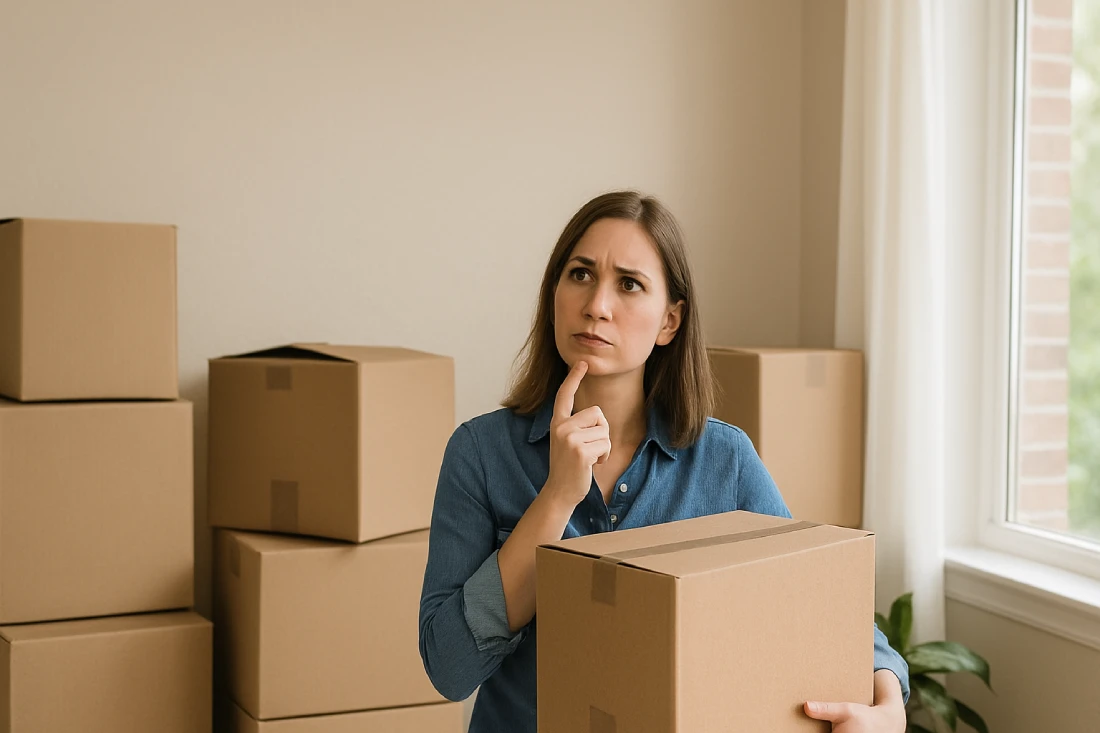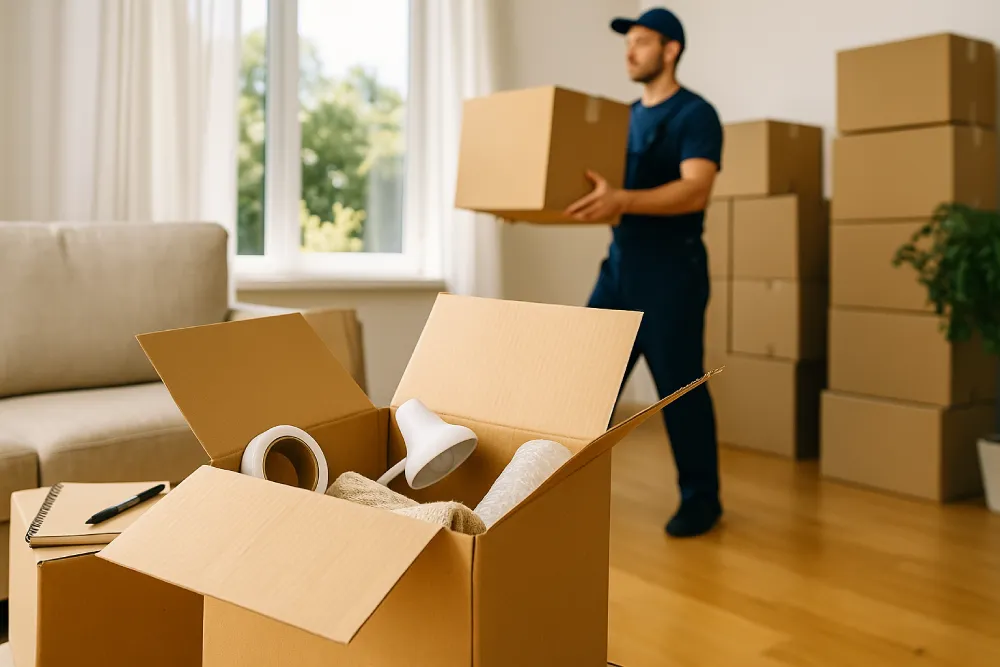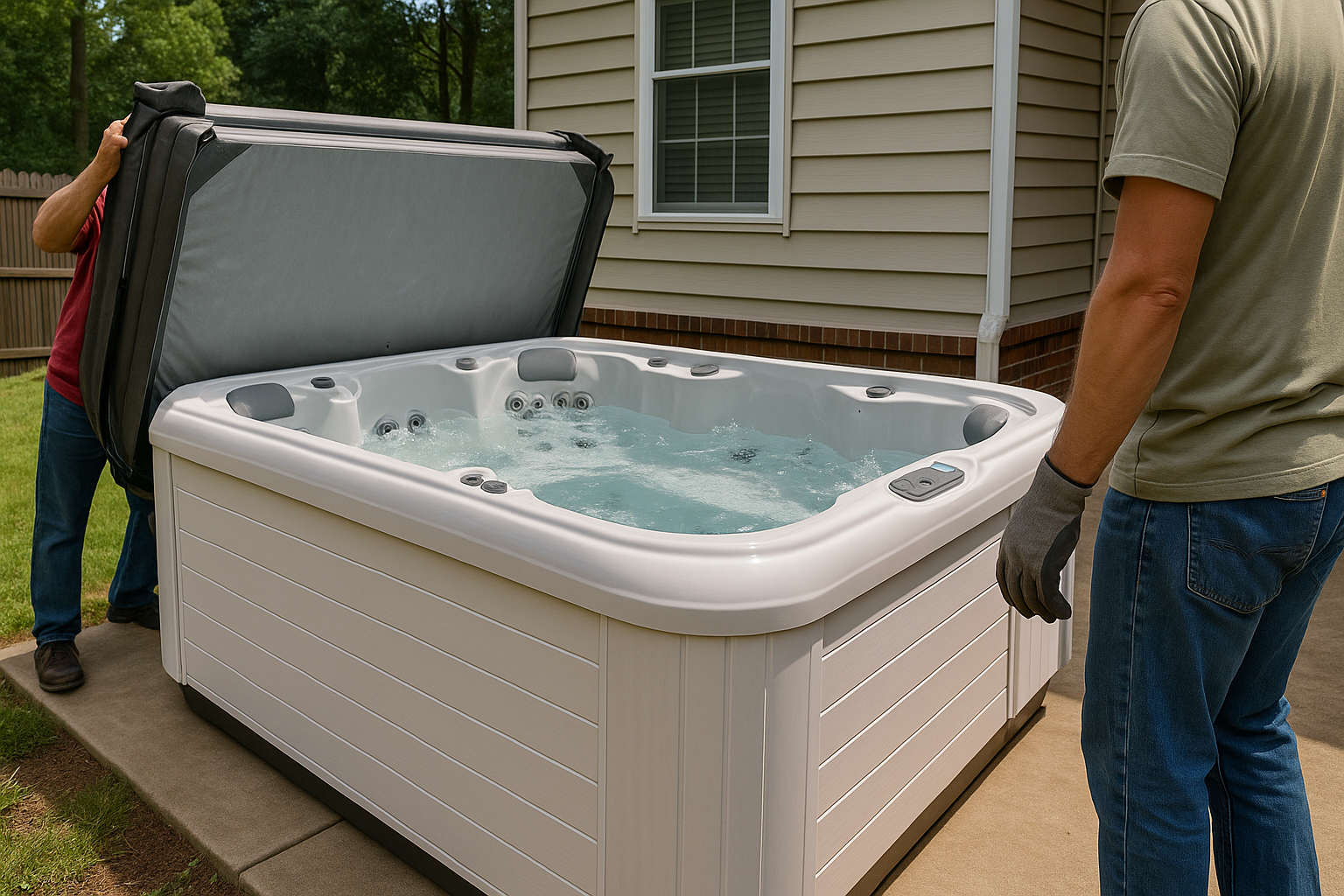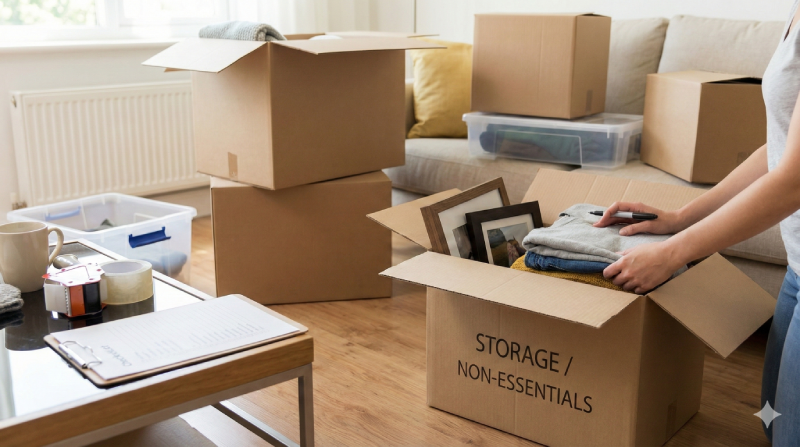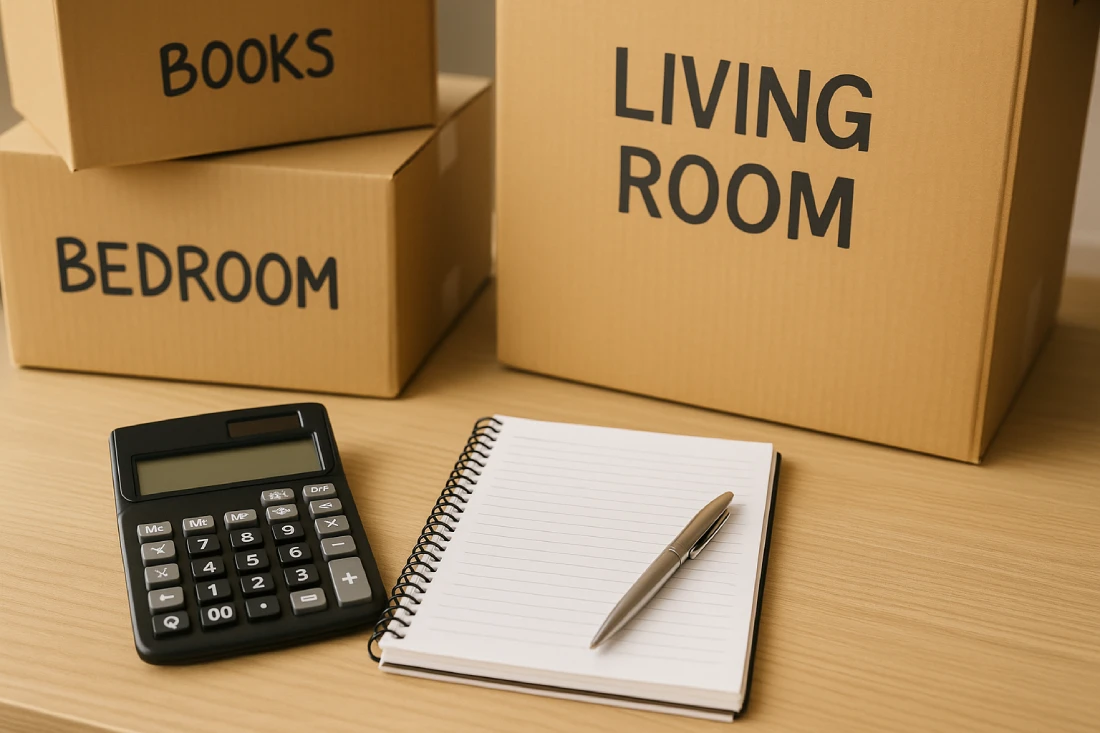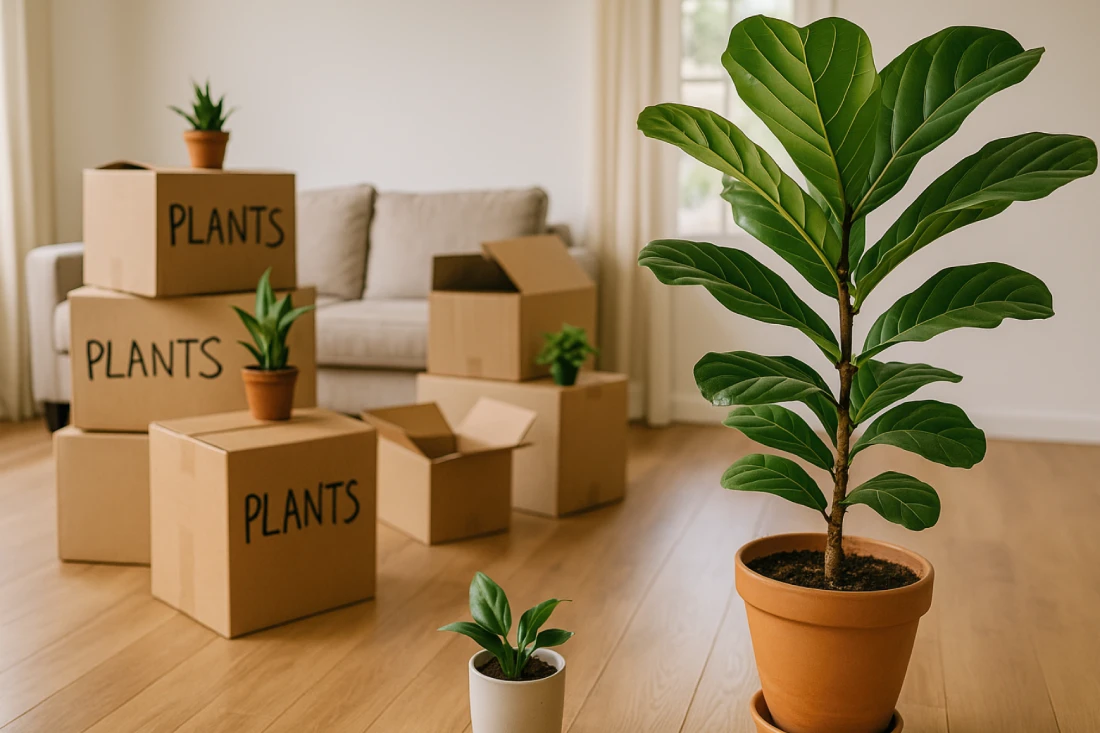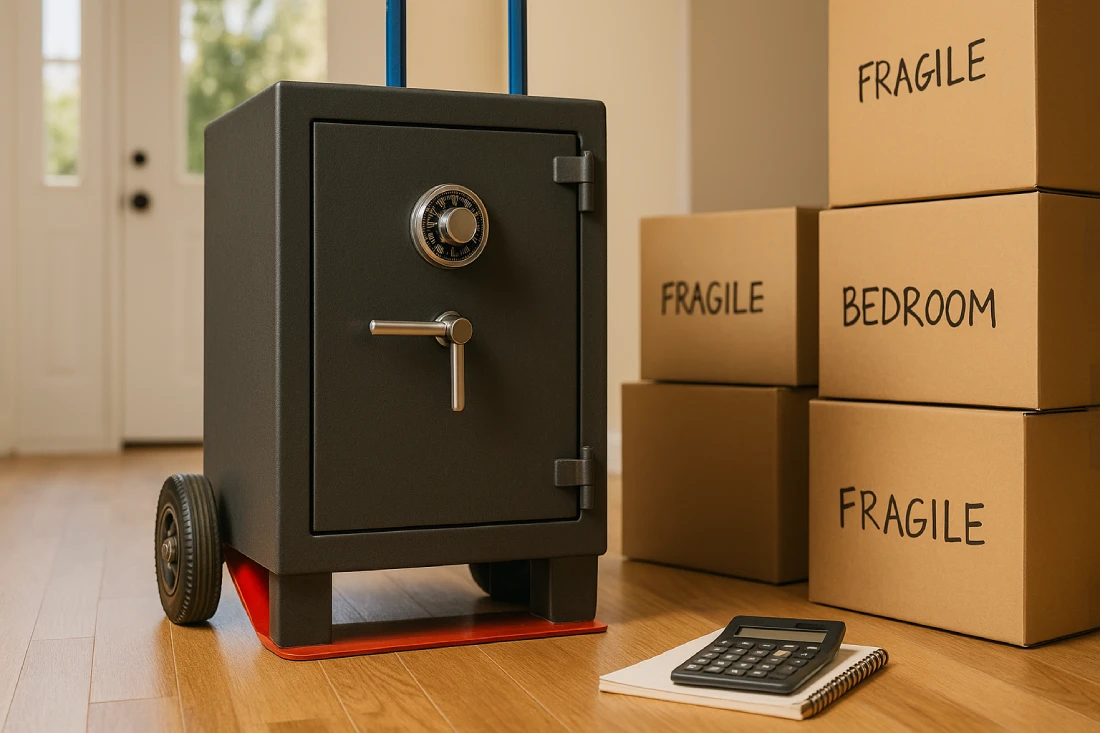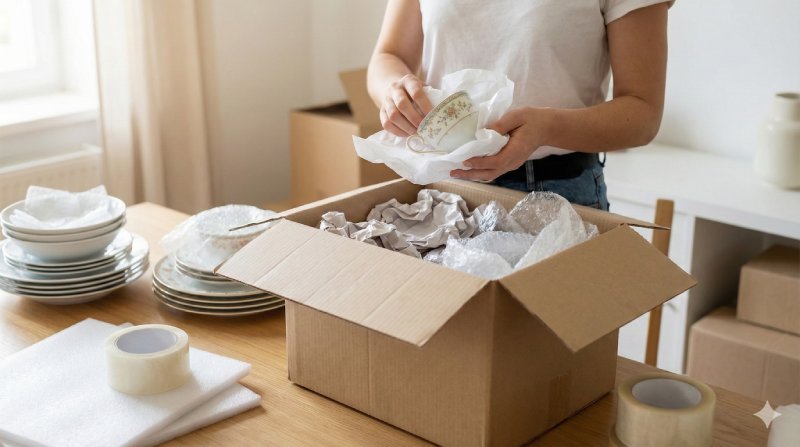Learning how to pack for a move in one day might sound impossible, but you can accomplish this feat with the right strategy and mindset. The key lies in organization, clever shortcuts, and keeping momentum throughout the process. In reality, thousands of people successfully pack and move on tight deadlines every week.
. When time is tight, focus on safe transport and basic organizationMilitary families master this skill through frequent relocations, students do it between semesters, and renters manage it when leases end unexpectedly. By following our room-specific strategies and professional techniques adapted for speed, as presented in this article, yYou'll be able to transform what seems like an overwhelming task into a manageable project.
Is It Realistic to Pack for a Move in One Day?
With the right approach, packing for a move in a single day is entirely realistic. The feasibility depends on your home size, preparation level, available help, and decision-making ability. Studio and one-bedroom apartments typically require just 20-30 boxes, making them quite manageable in a day.
Success depends on three important mindset shifts that professional movers use:
- Accept that perfection isn't the goal, focus on safe transport and basic organization when time is tight.
- Embrace decisive action using the "five-second rule" for sorting: if you can't decide whether to keep something within five seconds, it goes in the donation pile.
- Follow a system without emotional attachment to items. This is how professional movers pack three times faster than average homeowners.
Different situations require adjusted expectations based on your specific circumstances:
- Solo packers should focus on essentials and consider hiring same-day moving labor for heavy items.
- Families with children can assign kids age-appropriate tasks like packing toys or gathering electronics.
- Professional moving labor can handle furniture disassembly and heavy lifting, freeing you to focus on carefully packing personal belongings.
What Supplies Do You Actually Need the Night Before a One-Day Pack?
Gathering supplies the night before is non-negotiable for successful one-day packing; scrambling for boxes wastes precious morning hours when momentum matters most. Your packing to move supply list should account for both traditional materials and creative alternatives that save time and money while ensuring the safe transport of your belongings.
Boxes: Small, Medium, Large, Wardrobe
Selecting the correct box types and quantities is fundamental to a successful one-day move. For a typical one-bedroom apartment, you'll need a strategic mix of different sizes to accommodate various belongings efficiently.
- 10 small boxes for books, tools, and pantry items.
- 12 medium boxes for kitchen items, electronics, and linens.
- 8 large boxes for lightweight, bulky items like lampshades and pillows.
- 1-2 wardrobe boxes ($12-15 each) for transferring hanging clothes directly.
Most home improvement stores stock these supplies even in the late evening. For last-minute needs, check liquor stores for sturdy small boxes perfect for heavy items.
Tape, Dispensers, and Box Cutters
Efficient packing requires the right tools. Proper supplies can reduce packing time and frustration when moving quickly.
- Purchase at least 3 rolls of packing tape (one roll covers approximately 15 boxes).
- Invest in a tape gun dispenser ($15-20) to cut taping time by 50%.
- Keep multiple box cutters accessible for various packing needs.
Store these tools in a designated supplies box that travels separately for immediate access when needed.
Cushioning: Bubble Wrap, Towels, Linens
Save money and packing time by using what you already have for cushioning. Your household textiles provide excellent protection for most items when packing quickly.
- Use towels, sheets, and clothing as free padding instead of expensive bubble wrap.
- Reserve a small roll of bubble wrap only for truly irreplaceable items.
- Repurpose socks for glassware, sweaters for electronics, and bath towels for dishes.
Labels: Markers, Color Tape, Room Stickers
An effective labeling system saves hours during unpacking. Color-coding creates a visual organization that anyone can understand instantly.
- Use pre-printed room labels or colored tape instead of writing detailed contents.
- Assign each room a specific color (bedroom=blue, kitchen=red).
- Keep permanent markers in multiple rooms for immediate labeling.
- Note only essential warnings like "FRAGILE" or "HEAVY" when necessary.
Stretch Wrap and Furniture Pads
Protecting furniture during a quick move requires specialized materials. These items provide excellent protection without slowing down your packing process.
- Plastic stretch wrap ($20 for a large roll) secures drawers, bundles items, and protects surfaces.
- Rent furniture pads from truck rental companies ($10-15) or use your blankets.
- Secure blankets and comforters with stretch wrap for maximum protection.
Alternatives: Suitcases, Totes, Trash Bags
Repurpose existing containers to reduce box needs and costs. These alternatives often work better than cardboard for specific items.
- Use suitcases for heavy items like books to leverage built-in wheels.
- Pack garage items and cleaning supplies in plastic storage totes.
- Utilize heavy-duty contractor bags for clothing, bedding, and soft items.
- Avoid overpacking any container beyond what you can comfortably lift.
How Should You Plan Your One-Day Packing Schedule Hour by Hour?
The best way to start packing to move involves treating your day like a military operation with specific objectives for each time block. This hour-by-hour schedule assumes an 8 AM start, but adjust to your situation while maintaining the time proportions. Remember that professional packers maintain efficiency by never spending more than the allocated time in any room before moving on.
8:00–9:00: Set Up a Staging Zone
Transform your living room or garage into command central for your move. This area will serve as the collection point for all packed boxes throughout the day. Begin by completely clearing this space, creating designated areas for boxes from different rooms.
Set up a centralized supplies station with all your packing materials readily accessible. This initial organization prevents wasted time searching for materials later when you're in the middle of packing.
9:00–11:00: Declutter and Sort Fast
These critical two hours will determine your entire day's success. Move methodically through each room with three clearly labeled containers:
- Keep: Items you definitely need in your new home.
- Donate: Usable items that no longer serve you.
- Trash: Broken, expired, or unusable items.
Apply the five-second decision rule ruthlessly; it goes in the donation pile if you hesitate. Focus first on obvious discards like expired products, broken objects, and ill-fitting clothes. Load donation items directly into your vehicle to prevent second-guessing.
11:00–1:00: Pack Bedrooms and Closets
Bedrooms pack efficiently when you approach them systematically. Begin with items you won't need immediately, like off-season clothing, before moving to the dresser contents.
Use either wardrobe boxes or the garbage bag method (pulling bags up from the bottom of hanging clothes while still on hangers) for hanging clothes. Remember to:
- Keep one outfit accessible for tomorrow.
- Empty nightstands into small boxes.
- Photograph valuable items for insurance purposes.
- Strip beds last as you may need them tonight.
1:00–3:00: Pack Kitchen and Fragile Items
Kitchens typically require the most careful handling, but can be packed efficiently with smart techniques. Start by purging duplicates and expired items.
For dishes and glassware, use these time-saving methods:
- Pack plates vertically like records, not stacked flat.
- Use kitchen towels between plates for protection.
- Pack wine glasses and other delicate glassware upright and with enough padding.
- Keep one box unsealed for tonight's dinner items and tomorrow's coffee supplies.
3:00–5:00: Pack Living Areas and Bathrooms
Living rooms contain mostly electronics and décor, which pack quickly once you stop overthinking. Photograph all electronic setups before disconnecting anything, and bag all cords with their respective devices. Use original boxes for electronics whenever available.
Bathrooms typically need just 30 minutes to pack completely:
- Seal all liquids in plastic bags to prevent leaks.
- Pack medications separately for easy access.
- Use towels to cushion bottles and fragile items.
- Discard old toiletries without hesitation.
5:00–6:00: Label, Stage, and Prep Essentials
Your final hour focuses on the organization that will save significant time during unloading. Complete all box labeling using your color-coding system and stack boxes by destination room. Create clear pathways for tomorrow's loading process.
Prepare an essentials bag that stays with you, not in the moving truck, containing:
- Medications and important documents.
- Phone chargers and electronic necessities.
- Change of clothes and basic toiletries.
- Snacks and water for moving day.
What Should You Pack First vs Last to Stay on Track?
Understanding packing priority when learning to pack and move in one day prevents the common mistake of boxing essential items too early or leaving difficult items until exhaustion sets in. This strategic sequence optimizes for efficiency while giving you access to necessary items throughout the packing process.
Pack First: Off-Season Items and Décor
Begin with items you won't need immediately: holiday decorations, seasonal clothing, rarely used appliances, and extra linens. Pack books early, but keep boxes under 30-40 pounds. Wall décor and knick-knacks are also safe to pack since they won't affect your comfort on the final night.
Pack Last: Essential Daily Items
Keep daily necessities accessible until the final hour: medications, toiletries, phone chargers, and electronic devices. Pack one towel per person, basic toiletries, and tomorrow's outfit in a clearly marked "open first" box.
Keep With You: Important Documents and Valuables
Never load these items onto the moving truck: important documents (lease, insurance, birth certificates), jewelry, cash, and prescription medications. These should travel in your personal bag. Keep cleaning supplies accessible for final cleaning.
Room-by-Room Packing Strategy
Use these room-specific approaches to ensure nothing important gets left behind while maintaining efficiency.
Kitchen: Smart Dishware Packing
Pack plates vertically like records, using dish towels between every 3-4 plates. Nest pots and pans with paper towels between them. Use food containers for small items. Set aside paper plates and plastic utensils for your final meals.
Bedroom: Efficient Clothing Solutions
Use the garbage bag method for hanging clothes: gather hangers, pull a bag up from the bottom, and tie it at the top. Keep dresser drawers full and secure with stretch wrap. Roll clothes instead of folding to save space.
Use original boxes for electronics or wrap in blankets secured with stretch wrap when possibleBathroom: Leak-Proof Packing
Seal all liquids in zip-lock bags, even unopened bottles. Group items by category: medicines, hair products, and makeup. Discard expired items. Pack shower curtains and bath mats after final use.
Living Room: Electronics Protection
When possible, use original boxes for electronics or wrap in blankets secured with stretch wrap. Photograph cable connections before disconnecting. Bundle remote controls in a labeled bag and remove batteries.
Garage/Storage: Organized Grouping
Keep tools together in toolboxes or heavy-duty bags. Drain fluids from equipment and properly dispose of hazardous materials. Bundle sports equipment with stretch wrap. Check high shelves for overlooked items.
How to Pack Fragile Items Quickly and Safely
Use these professional techniques to ensure everything arrives intact while maintaining efficiency.
Clothes: Use the Trash-Bag Method
For hanging clothes, gather 8-10 hangers, pull a large bag from the bottom up, and tie it at the hooks. These bundles lie flat in vehicles or stand in wardrobe boxes, saving significant time over individual packing.
Dishes: Bundle Similar Items Together
Wrap 4-5 plates together, packing paper or towels between each. Pack glasses in cell boxes or nest them in clean socks. Stuff mugs with paper towels. Label these boxes "FRAGILE" with "THIS SIDE UP" arrows.
Electronics: Original Packaging When Possible
Use original boxes when available. Otherwise, wrap screens in blankets and transport upright. Never lay flat screens horizontally. Use foam corner protectors for monitors and transport small electronics in your personal vehicle.
Cables: One Device, One Bag
Keep all cables, remotes, and accessories with their devices in labeled bags. Photograph setups before disconnecting and use masking tape to label cable ends if needed. This organization saves hours during setup.
How Do You Label and Stage Boxes So Unloading Is Faster?
Smart labeling and staging when you pack to move in one day can reduce unloading time by 50% or more. These final organizational steps may feel tedious when you're exhausted, but they're invaluable when facing a truck full of identical brown boxes at your destination.
Color-coding provides the most efficient labeling system for quick identification. Here's how to implement an effective labeling strategy:
- Assign each room a specific color using colored tape or stickers for instant recognition.
- Write only essential information: room destination and "FRAGILE" or "HEAVY" warnings.
- Number boxes sequentially and photograph contents for insurance purposes.
- Skip detailed content lists; they consume valuable packing time.
Strategic box placement near your exit door significantly improves loading efficiency. Consider these staging principles:
- Group boxes by destination room for organized loading.
- Form a sturdy foundation with heavy boxes, stacking lighter ones no higher than chest-level.
- Create clear pathways for furniture movement to prevent bottlenecks.
- Load storage/garage items first and immediate-need items last to ensure proper unloading order.
Professional movers consistently praise customers who stage boxes properly. This organization allows moving teams to focus on efficient heavy lifting rather than constantly asking where items belong, which translates directly into cost savings when paying hourly rates for moving assistance.
Where Can You Get Last-Minute Help or Supplies Today?
When time runs out and you need professional assistance for a quick move, same-day options exist beyond calling friends who may already be busy. Professional moving services can transform an overwhelming task into a manageable project.
Moving Muscle specializes in last-minute situations, offering background-checked crews available for same-day booking. We help you load and unload your belongings, allowing you to get the support you need while you save costs by doing your own packing.
FAQ: Common Last-Minute Moving Questions
What if I can't finish packing in one day?
Focus on packing essentials and valuable items first. Consider renting a storage unit for items you can't pack in time, or extending your move-out timeline if possible. Many landlords or property managers may allow a grace period with proper communication.
What will packers not pack?
Professional movers cannot transport hazardous materials (paint, propane, chemicals), perishable food, plants, important documents, jewelry, or prescription medications. These items require personal transport.
How do I move large furniture on my own?
Use proper moving equipment, such as sliders, dollies, and lifting straps, to move heavy furniture. Remove drawers before moving dressers, disassemble bed frames, and use the "high-low" method, where one person lifts high and the other lifts low when carrying with a partner. Consider hiring professionals to move particularly heavy items to avoid injury.
How can I handle delicate electronics during a quick move?
For delicate electronics like computers and TVs, use anti-static bubble wrap if available, or wrap them in blankets secured with stretch wrap. Keep original boxes whenever possible, as they provide custom-fitted protection, back up data on computers and hard drives before moving. Transport these items in your vehicle rather than the moving truck to minimize jostling and temperature fluctuations.
What's the best approach for moving with pets during a one-day move?
Prepare a quiet room with familiar items where pets can stay during the packing chaos. Pack their essentials (food, medications, toys, bedding) in a clearly labeled box that travels with you, not in the moving truck. Consider boarding services for moving day to reduce stress, or assign a family member responsible solely for pet care. Ensure pets have proper identification in case they get loose during the move.
Do movers pack for you?
Yes, some professional moving companies offer packing services for an additional fee. Full-service movers can pack your entire home, from fragile kitchenware to clothing and furniture. They bring all necessary supplies and can typically pack a home in a fraction of the time it would take you. However, this convenience comes at a cost: expect to pay $25-$50 per hour per packer, which can add $500-$2,000 to your moving costs depending on home size. For budget-conscious movers, consider partial packing services where professionals handle only fragile or difficult items while you pack the rest.


.webp)
